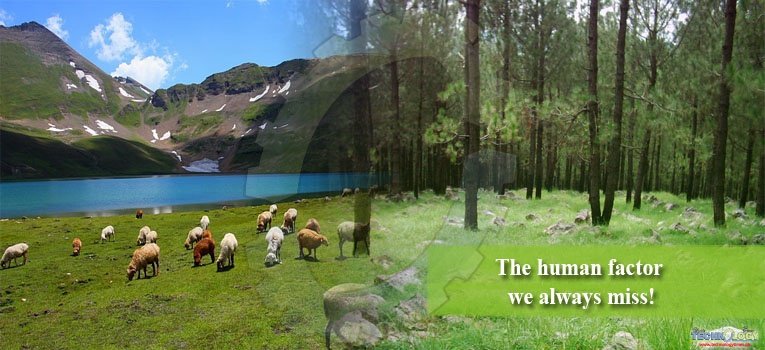Remote rural communities, forest residents and fringe forest dwellers within and adjacent to national parks, reserve forests, sanctuaries, biodiversity hotspots are known to be directly and indirectly dependent on local forests for their sustenance and livelihood in the poor developing and under developed nations of Asia, Africa, Latin America and Eurasia.

The rise of human populations in these ecologically sensitive pockets, human migration and settlements as well as illegal encroachments inside the forests in many instances have crossed or in the verge of crossing the ecological and environmental carrying capacity severely deteriorating and jeopardizing habitat quality for local wildlife and biodiversity.
There has been covert political support behind these actions for narrow vote bank politics leading to destruction of forests which in term is responsible for mass scale habitat fragmentation and habitat destruction pushing local flora and fauna towards slow extinction in the not so distant future.
Overexploitation of forests and illegal collection of major and minor forest products, unrestricted and illegal grazing, anthropogenic forest fires, poaching and wildlife trafficking within protected areas has been disturbing the peace and tranquility of nature and wildlife reserves necessary for wildlife to forage, nest and breed successfully.
Hence, unless the socio-economic conditions of the people living around parks is improved with long term employment, education, health benefits; true fruits of the conservation could never be fully achieved. The development of the ecosystem not only includes the forest, wildlife and biodiversity; but also the humans who has been living and sharing the ecosystem services for many generations.
Unless the human factor is comprehensively considered in terms of socio-economic and rural developments we could expect very little ‘true’ success in terms of tiger conservation from a long term perspective. We have to accept the real cause of the problem first to make any meaningful change to the system and to see ‘real’ success for successful conservation of tigers.
Conservation failure factors
One of the most important factors that contribute towards the failure of any targeted conservation program is not giving any attention to the human side of conservation initiatives globally. We need to remember that without catering to that human side of conservation programs; no conservation efforts ever will see any success whether it is developed or developing or under developed nation.
Unfortunately though; in several cases this human side of the conservation equation is consciously or semi consciously or completely unconsciously omitted. Often there is a political, economic or ethnic do used to this unfortunate omission.
Nonetheless, one can clearly state that omitting the human side of the conservation equation is nothing but a recipe for complete or partial failure. It is quite impossible and absolutely not advisable to eradicate the human side of any conservation practice with long-term objectives.
Human factor in the conservation equation
Humans have lived side-by-side in and around wilderness for generations in different corners of this planet. They are intimately associated with their immediate environment including dense forests and wildlife. They have developed close ties with their natural surroundings and have intimate knowledge of the forests and it’s numerous challenges as well as opportunities.
Such people include communities like tribal or aboriginal people living inside or around the perimeter of the forest, fringe forest residents, forest dwellers like different Amazonian tribes, landless marginal communities, remote rural communities living in densely forested border villages and communities living in difficult terrains such as mountainous areas, deserts, remote islands to mention only a handful.
By keeping this important stakeholders with age old traditions and wisdom about forest and wildlife away from the conservation operation is never going to help in any conservation effort whatsoever in any corner of this planet.
Recommendations
To make conservation efforts and practices viable, sustainable and achievable it is absolutely necessary to integrate such stakeholders as mentioned above into the conservation equation permanently as an inseparable constituent. Search resourceful community members with intimate knowledge about wildlife and forest need to be employed by the Forest department or through state or central government rural employment schemes to provide them with a livelihood and some secured income.
Creating self-help groups, women groups, forest patrolling group, village conservation and social forestry committees could drastically change the future of conservation in any corner of the globe. As communities living close to the forest or inside the forests are made to be aware of the economic and social values of the forest in their life they would transform into one if the most formidable champions and guardians of conservation practices.